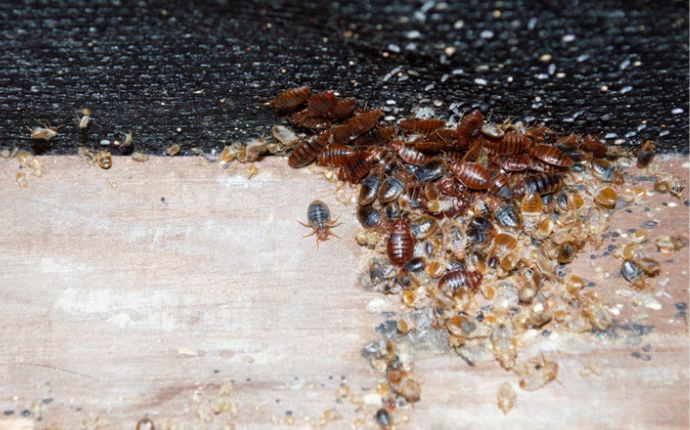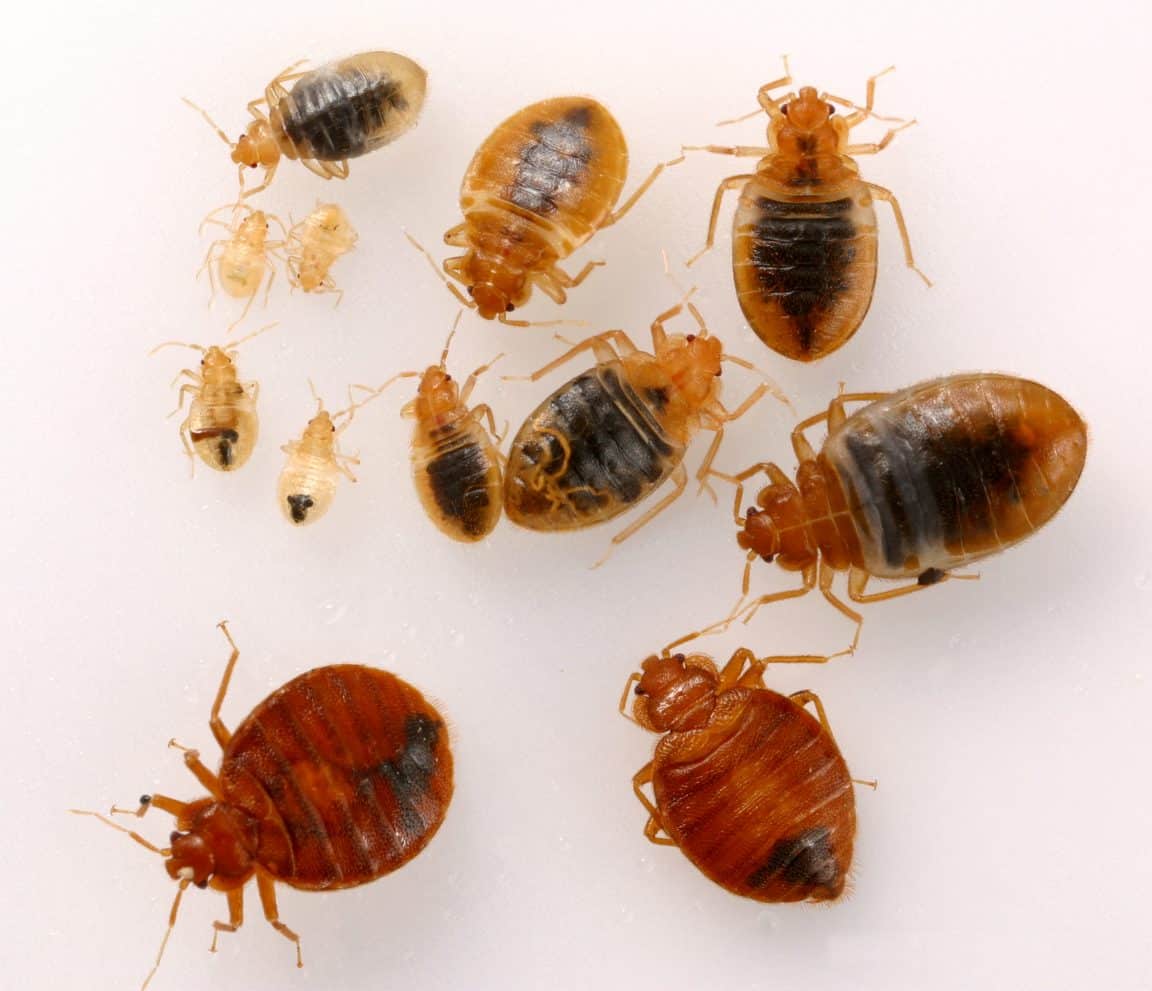To attract bed bugs to one spot, implement warmth and carbon dioxide. These pests are drawn to body heat and exhaled CO2.
In order to effectively attract bed bugs to one spot, it is important to understand their natural instincts and behavioral patterns. Bed bugs are attracted to warmth and carbon dioxide, as these signals indicate the presence of a potential host.
By strategically using heat sources and CO2 emitters, such as dry ice, in a confined area, it is possible to lure bed bugs to that specific location. This targeted approach can be helpful in identifying and controlling bed bug infestations. Understanding how to attract bed bugs to one spot can be a crucial step in managing and addressing these pests in a proactive manner.

Credit: romneypestcontrol.com
Understanding Bed Bug Behavior
Bed bugs are pesky little creatures that can quickly become a nuisance if left unchecked. Understanding bed bug behavior can help you effectively combat infestations. By knowing their characteristics and what attracts them, you can take proactive steps to prevent them from spreading throughout your home.
Bed Bug Characteristics
- Color: reddish-brown
- Size: about the size of an apple seed
- Shape: oval and flat
- Behavior: nocturnal feeders
Factors Attracting Bed Bugs
- Presence of carbon dioxide
- Body heat emitted by humans
- Cluttered spaces providing hiding spots
- Availability of blood meals
Creating An Appealing Environment
Learn how to create an environment that attracts bed bugs to a single spot with these effective tips. Discover the secrets to attracting and eliminating bed bugs for a clean and appealing living space.
Creating an Appealing EnvironmentWhen it comes to attracting bed bugs to one spot, creating an appealing environment is crucial. Bed bugs are drawn to certain conditions that provide them with the warmth, shelter, and sustenance they need to thrive. By identifying ideal locations and optimizing temperature and humidity, you can make your space an irresistible destination for these unwanted pests.Identifying Ideal Locations
Bed bugs are experts at finding hiding spots that offer protection and proximity to their human hosts. To bring them to one spot, it’s essential to identify the areas they are most likely to inhabit. Here are some key places to focus on:1. Mattresses and Box Springs: Bed bugs are often found in the seams and crevices of mattresses and box springs, as these provide easy access to their prey during the night.2. Furniture: Upholstered furniture, particularly couches and chairs, can harbor bed bugs. Pay close attention to the seams, cushions, and any cracks or crevices.3. Cluttered Spaces: Bed bugs thrive in cluttered environments where they have numerous hiding spots. Decluttering your space can help disrupt their hiding spots and make them more likely to gather in one area.4. Cracks and Crevices: Bed bugs can squeeze into the tiniest of cracks and crevices, including baseboards, walls, and electrical outlets. Seal these openings to make them less desirable hiding spots.Optimizing Temperature And Humidity
Bed bugs prefer an environment that mimics their natural habitat – warm and humid. By optimizing these conditions, you can create an enticing atmosphere for them to congregate. Consider the following factors:1. Temperature: Bed bugs thrive in temperatures between 70 and 80 degrees Fahrenheit. Adjusting the thermostat to the upper range can make your space more attractive to them.2. Humidity: Bed bugs require humidity levels between 70 and 80 percent to survive. Using a humidifier or placing a bowl of water near their potential hiding spots can create the ideal moisture level.3. Carbon Dioxide: Bed bugs are attracted to the carbon dioxide we exhale while breathing. Mimicking this attraction can be achieved by using carbon dioxide traps designed to lure and capture them.Remember, attracting bed bugs to one spot should only be done for purposes of control and elimination. If you suspect an infestation, it’s crucial to contact a professional pest control service to ensure effective management of the situation.Using Attractants And Lures
Attracting bed bugs to one specific spot can be a useful strategy in controlling and eliminating these pesky pests. By utilizing attractants and lures, you can draw bed bugs away from their hiding places and into targeted areas where you can manage them more effectively. In this section, we will explore two approaches to attracting bed bugs: natural attractants and commercial bed bug lures.
Natural Attractants
Natural attractants are substances that emit scents or produce conditions that draw bed bugs towards them. While not as potent or reliable as commercial lures, natural attractants can still be effective in attracting bed bugs to a specific spot.
Here are some commonly used natural attractants:
- Carbon dioxide (CO2) – Bed bugs are attracted to the carbon dioxide we exhale. By strategically placing CO2 traps or using dry ice, which releases carbon dioxide as it sublimates, you can lure bed bugs to a desired area for further treatment.
- Heat – Bed bugs are attracted to warm environments. Using portable heaters or heating pads to create heat sources in specific locations can entice the bugs to gather there.
- Human scent – Bed bugs are attracted to the scent of humans. By placing clothing or bedding with human odor, such as unwashed pajamas or used pillowcases, in targeted spots, you can lure bed bugs to that area.
Note that natural attractants alone may not be sufficient for complete bed bug control, but they can be used as supplementary methods alongside other techniques.
Commercial Bed Bug Lures
Commercial bed bug lures are specially formulated products that are more potent and reliable in attracting bed bugs. These products typically contain pheromones or synthetic chemical attractants that mimic the odors that bed bugs find irresistible.
Here are some commonly used commercial bed bug lures:
- Pheromone traps – Pheromones are chemicals released by bed bugs to communicate with each other. Pheromone traps mimic these chemicals to lure bed bugs into traps, where they can be captured and disposed of.
- Bed bug monitors – These are devices with adhesive surfaces that attract and trap bed bugs. Some monitors use lures that release chemical scents specifically designed to attract bed bugs.
- Bed bug interceptor traps – These traps are placed under the legs of beds or furniture to trap bed bugs that try to climb up or down. Some interceptors contain lures that enhance their effectiveness.
Commercial bed bug lures can greatly enhance your efforts in attracting bed bugs to a specific spot and can be used in conjunction with other bed bug control methods.

Credit: bedbugspecialist.co.uk
Implementing Traps And Monitoring Techniques
Attracting bed bugs to one spot requires strategic implementation of traps and monitoring techniques. By utilizing the right tools and methods, you can effectively concentrate these pesky insects in a targeted area for better control and eradication.
Types Of Traps
There are various types of traps specifically designed to lure and capture bed bugs:
- Pitfall traps: shallow containers filled with talcum powder to trap bed bugs
- Climb-up interceptors: devices that prevent bed bugs from climbing up furniture or beds
- Glue traps: sticky traps that capture bed bugs when they come into contact with the adhesive
Regular Monitoring
Consistent monitoring is crucial in assessing the effectiveness of trapping methods:
- Inspecting traps regularly to check for captured bed bugs
- Keeping track of the number of bed bugs caught over time
- Making adjustments to trap placement based on monitoring results
Understanding Risks And Precautions
Learn how to attract bed bugs to one specific spot by understanding the risks and taking necessary precautions. Discover effective methods to lure these pests, keeping your home free from their infestation. Keep reading for expert tips and advice.
Understanding Risks and PrecautionsBed bugs can infest any home or lodging, causing irritation, anxiety, and discomfort. It’s crucial to comprehend the potential health risks associated with bed bug infestations and implement precautionary measures to avoid their spread. By being proactive, you can mitigate the risk of bed bugs infesting your living space and avoid the associated health hazards.Health Risks
Bed bug bites can cause itching, redness, and swelling. Additionally, some individuals may experience allergic reactions to bed bug bites, leading to severe itching and discomfort. Scratching the bites can lead to skin infections, which may require medical attention. Furthermore, the psychological impact of living with bed bugs can result in stress, anxiety, and sleep disturbances.Precautionary Measures
To minimize the likelihood of attracting bed bugs to your living space, it’s essential to take preventive measures. Employ these precautions to safeguard your home:- Regularly inspect and clean bedding, furniture, and carpeting to detect any signs of bed bug activity.
- Minimize clutter and maintain a tidy living environment, reducing potential hiding spots for bed bugs.
- Be cautious when acquiring second-hand furniture or clothing, as they can harbor bed bugs.

Credit: todayshomeowner.com
Professional Control And Extermination
Seeking professional assistance for bed bug infestations is crucial for effective eradication. Professional exterminators are equipped with the necessary training, tools, and chemical treatments to eliminate bed bugs from your home.
Seeking Professional Assistance
When battling a bed bug infestation, it’s advisable to seek the expertise of certified pest control professionals. They possess the knowledge and experience to accurately identify and target bed bug hotspots, which can be challenging for untrained individuals.
- Swift identification and elimination of bed bugs
- Thorough inspection of infested areas
- Utilization of industry-approved treatment methods
- Advice on preventative measures to avoid future infestations
Effective Extermination Methods
Professional exterminators implement various extermination techniques to eradicate bed bugs from your surroundings. These methods are designed to target bed bugs at all stages of their life cycle, ensuring complete eradication.
- Heat treatments to eliminate bed bugs and their eggs
- Chemical sprays and dusts to control bed bug populations
- Vacuuming and steam treatments for thorough removal
- Monitoring and follow-up inspections to ensure eradication
Frequently Asked Questions On How To Attract Bed Bugs To One Spot?
How Can I Effectively Attract Bed Bugs To One Spot?
To attract bed bugs to one spot, you can use specific traps or interceptors designed for them. Additionally, utilizing materials that emit CO2 or heat can enhance the attraction. Proper placement and consistency are key in luring bed bugs successfully to a designated area.
What Are Some Common Mistakes To Avoid When Trying To Attract Bed Bugs?
Avoid using inappropriate traps, relying solely on DIY methods, or moving too quickly when attempting to attract bed bugs to one spot. Rushing the process or using ineffective techniques can hinder successful attraction and control efforts.
Why Is It Important To Localize Bed Bugs In One Spot?
Localizing bed bugs in one spot is crucial for effective treatment and control. It helps in concentrating the infestation for targeted eradication methods, reducing the spread to other areas, and facilitating comprehensive inspection and treatment strategies for better results.
Conclusion
Attracting bed bugs to one specific spot requires a strategic approach. By creating favorable conditions such as warmth and darkness, using bed bug attractants like CO2 and pheromones, and implementing proper hiding places, you can effectively lure bed bugs to a targeted area.
Remember to regularly monitor and assess the infestation, and seek professional help if needed. With these tactics, you can efficiently deal with bed bug problems and regain control over your living space.
Related posts:

I’m MD Tanvir, and I bring years of expertise gained from working closely with pest control companies to the forefront. My journey in the industry has inspired me to launch Bug Battler, a platform aimed at equipping people with the know-how to combat pests autonomously. Through Bug Battler, I aim to empower individuals with practical insights to tackle pest infestations effectively.

